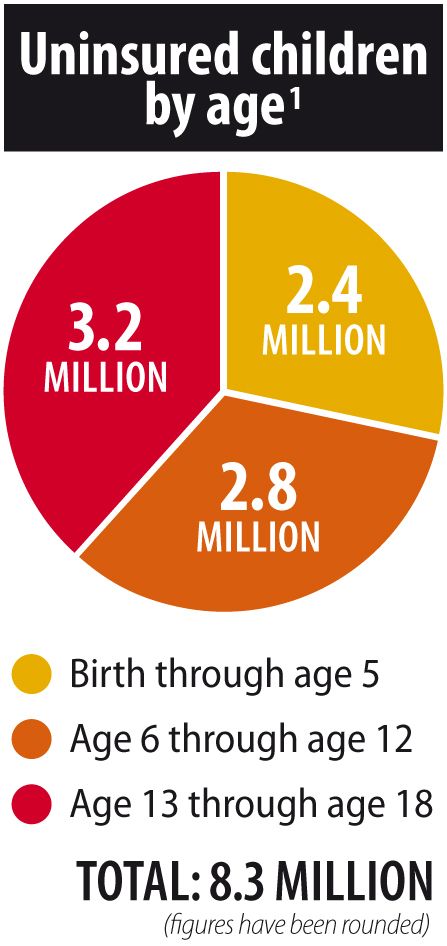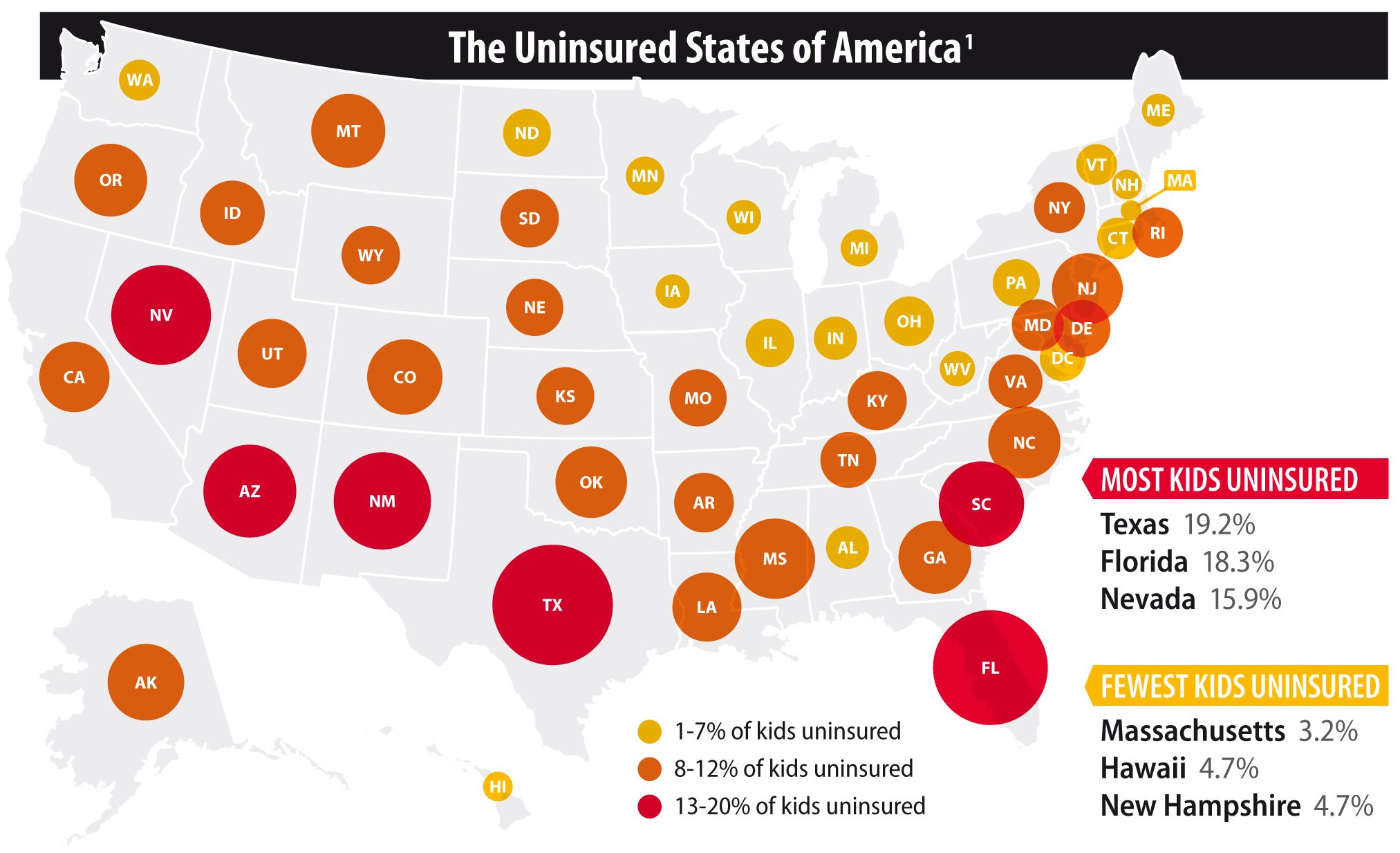Obamacare: What’s in it for kids?
Preventive health care services, including dental and vision benefits, will now be available under the ACA to millions of previously uninsured children.
The Patient Protection and Affordable Care Act (ACA), popularly known as Obamacare, will dramatically improve access to health insurance for children. In 2010, it was estimated that there were more than 8 million uninsured kids in the United States.1 Older children aged 13 to 18 years comprised a greater percentage of the uninsured when defined by age, and other factors of race/ethnicity and income level also played a role. The ACA provides the opportunity to reach many more children from all backgrounds. More importantly, under ACA mandates, preventive health services are set to become available to millions of children.

Children aged younger than 19 years also can no longer be denied health insurance coverage because of a preexisting condition.2 Families can choose a pediatrician as their child’s primary care physician. The American Academy of Pediatrics (AAP) offers online resources at www.aap.org that are specific to each state to give information and support to both parents and pediatricians in search of a health insurance plan that appropriately covers the needs of families and their children.3 Education on working with the new ACA marketplace and answers to questions on how parents can best evaluate insurance plan options are provided on the AAP website, www.healthychildren.org.
The new private health plans that have emerged because of the ACA must cover the cost of preventive care for pediatric patients.2 These preventive services have been written into the essential health benefit (EHB) provisions in force under the ACA. Defined as services for those younger than the age of 19 years, such preventive health services will be part of all marketplace health plans and many others without the requirement of a copayment or coinsurance, or the need to meet a yearly deductible.4 The list of pediatric preventive health services is extensive and includes screenings for blood pressure, depression, and obesity, and well-child checkups and immunizations. Perhaps the greatest impact will be felt through the inclusion of dental and vision services for children.

Pediatric dental services
Dental coverage is required by the ACA for children but not for adults. According to the American Dental Association (ADA), it is expected that approximately 8.7 million children will receive dental benefits by 2018.5 This expansion of services will come through employer-sponsored insurance (2.5 million), health insurance exchanges or marketplaces (3 million), and Medicaid (3.2 million). Consequently, the number of children without dental benefits could be reduced by about 55% in 2010.
All individual and small group market plans, both inside and outside the federal health insurance exchange, must be certified as qualified health plans (QHPs) after January 1, 2014. The QHPs must offer pediatric oral health services as part of the 10-category EHB package. Children can receive coverage through a QHP that also provides dental coverage, through a stand-alone dental plan purchased concurrently with a QHP, and through a bundled plan for which one premium is paid for individual medical and dental policies.6
This dental benefit must be offered within the health insurance exchanges overseen by the federal government, but it does not have to be purchased.5 However, it must be offered and purchased in the individual and small-group markets outside the exchange. Families who are earning up to 400% of the federal poverty level (for a family of 4, an annual income of $94,200) qualify for a tax credit, thus lowering their monthly premiums.6
Covered preventive services will include teeth cleaning, x-rays, fillings, and orthodontics considered medically necessary.7 Websites with more information on these new pediatric dental services include the ADA, www.ada.org, and the Children’s Dental Health Project, www.cdhp.org.
Pediatric vision services
Pediatric vision services will also be part of the medical plans that must be purchased under the ACA, including annual, fully dilated, routine comprehensive eye exams; follow-up visits; and correction of refractive error with eyeglasses and contact lenses.8 Insurance plans generally have not included eye exams and related follow-up care before, but vision services have now been designated an EHB. Prior to ACA reforms, it had been estimated that over half of uninsured children had not had a well-child visit to a physician, which would have included vision screening.9 These routine vision screenings are central to the early detection and treatment of vision problems.
For children from newborns aged up to 3 years, childhood vision screening will include a red reflex test, corneal light reflection, ocular motility, pupil examination, external examination, and vision assessment performed at all well-child visits.8,10 For children aged 3 to 5 years, an annual vision screening with age-appropriate visual acuity testing will be required. Thereafter, vision screening should occur every 1 to 2 years. The change in care will be dramatic, considering that in the past approximately 1.43 million uninsured kids have had an unmet vision care need.9
The AAP also explains that vision screening should occur in the context of a medical home.8 This approach to comprehensive care, which is not a specific physical location but rather a concept, allows a pediatric care team to work together with a child’s family regarding the appropriate delivery of a child’s medical and nonmedical needs. The new insurance plans will allow for a family-centered medical home that provides access to care and assists with specialty care, out-of-home care, education, family support, and community services. The AAP website, www.healthychildren.org, and the American Academy of Ophthalmology, www.aao.org, provide information on children’s vision services under the ACA.
As pediatricians continue to help families navigate through their policy choices during the 6-month ACA open-enrollment period that began October 1, 2013, they can also help themselves learn about the Small Business Health Options Program (SHOP), the health insurance exchange/marketplace for small businesses comprised of 50 or fewer employees. Although pediatric practices do not have to provide their staffs with health insurance, those that do offer coverage through SHOP may qualify for tax credits. For more information about the small business marketplace, go to www.healthcare.gov/small-businesses/. Information explaining how to find out if your practice qualifies for this tax credit can also be found at www.irs.gov/uac/Small-Business-Health-Care-Tax-Credit-for-Small-Employers.
REFERENCES
1. Children’s Defense Fund. Profile of America’s uninsured children, 2010. http://www.childrensdefense.org/child-research-data-publications/data/profile-of-americas-uninsured-children-2010.html. Published February 3, 2011. Accessed November 15, 2013.
2. American Academy of Pediatrics. The Affordable Care Act: what your family needs to know. http://www.healthychildren.org/English/family-life/health-management/health-insurance/Pages/The-Affordable-Care-Act-What-Your-Family-Needs-to-Know.aspx. Updated October 17, 2013. Accessed November 15, 2013.
3. American Academy of Pediatrics. Health reform implementation: resources for pediatricians. http://www.aap.org/en-us/advocacy-and-policy/pages/State-Health-Insurance.aspx. Accessed November 15, 2013.
4. HealthCare.gov. What are my preventive care benefits? Part 3: preventive health services for children. https://www.healthcare.gov/what-are-my-preventive-care-benefits/#part=3. Accessed November 15, 2013.
5. American Dental Association. ADA News: Affordable Care Act, dental benefits examined. http://www.ada.org/news/8935.aspx. Published August 19, 2013. Accessed November 15, 2013.
6. Reusch C. Children’s Dental Health Project. FAQs: pediatric oral health services in the Affordable Care Act (ACA). https://www.cdhp.org/resources/165-faqs-pediatric-oral-health-services-in-the-affordable-care-act. Published September 26, 2013. Accessed November 15, 2013.
7. Evans M. Obamacare and kids dental, vision coverage. Washington Post. October 14, 2013. http://www.washingtonpost.com/national/health-science/obamacare-and-kids-dental-vision-coverage/2013/10/14/1b0183e2-3108-11e3-8627-c5d7de0a046b_story.html. Accessed November 15, 2013.
8. American Academy of Pediatrics. Children’s vision services under the ACA. http://www.healthychildren.org/English/family-life/health-management/health-insurance/Pages/Childrens-Vision-Services-Under-the-ACA.aspx. Updated November 4, 2013. Accessed November 15, 2013.
9. Campaign for Children's Health Care. No shelter from the storm: America’s uninsured children. http://www.childrenshealthcampaign.org/tools/reports/no-shelter-key-findings.html. Published September 28, 2006. Accessed November 15, 2013.
10. American Academy of Ophthalmology. American Academy of Ophthalmology offers guidance on the new Affordable Care Act childhood vision care benefit. http://www.aao.org/newsroom/release/20130923.cfm. Published September 23, 2013. Accessed November 15, 2013.
MS SCHWENKER, a freelance medical writer and editor from Princeton, New Jersey, has 30 years’ experience writing for health care professionals and medical journals, including Advanstar publications Formulary and Drug Topics. MS SCHNEIDER, is a content specialist with Ophthalmology Times, also an Advanstar publication. The authors have nothing to disclose in regard to affiliations with or financial interests in any organization that may have an interest in any part of this article.